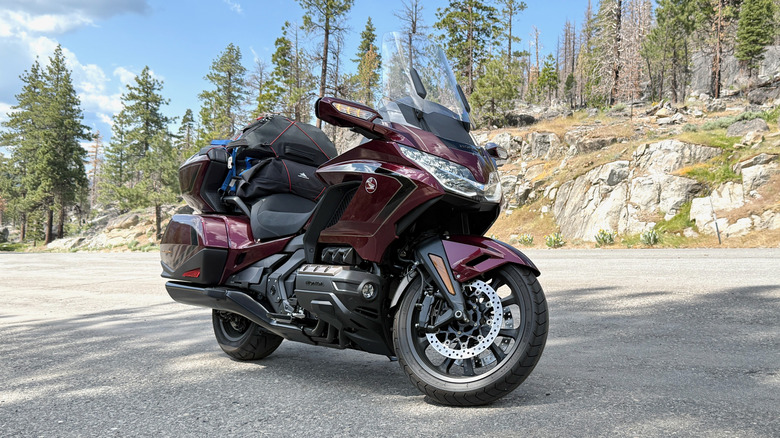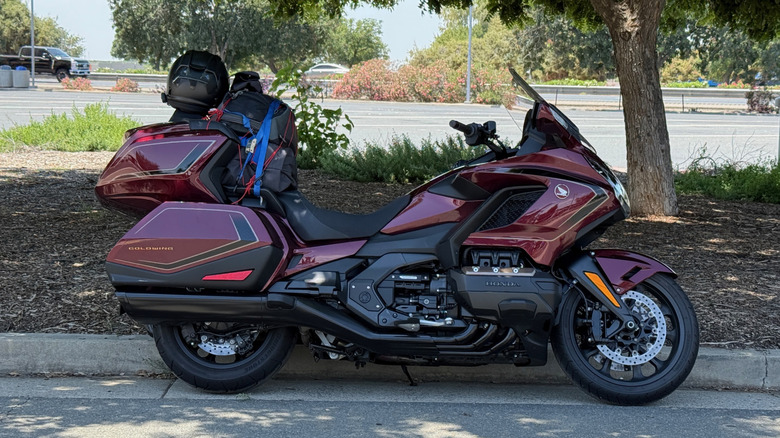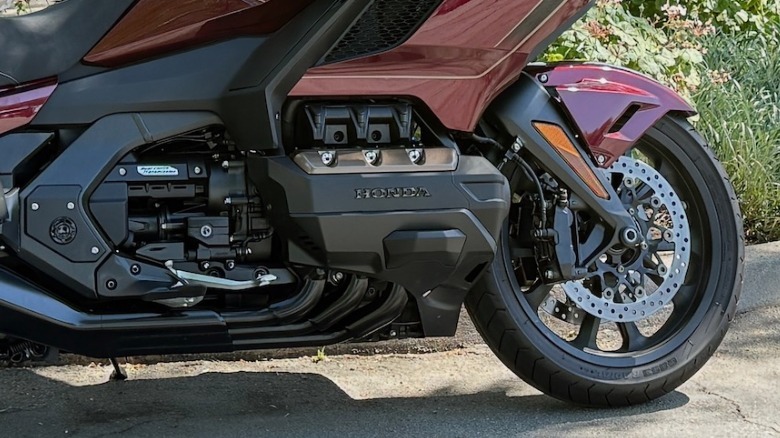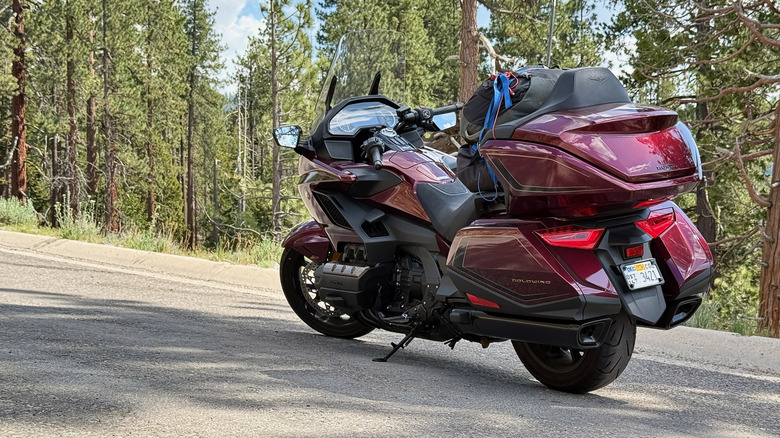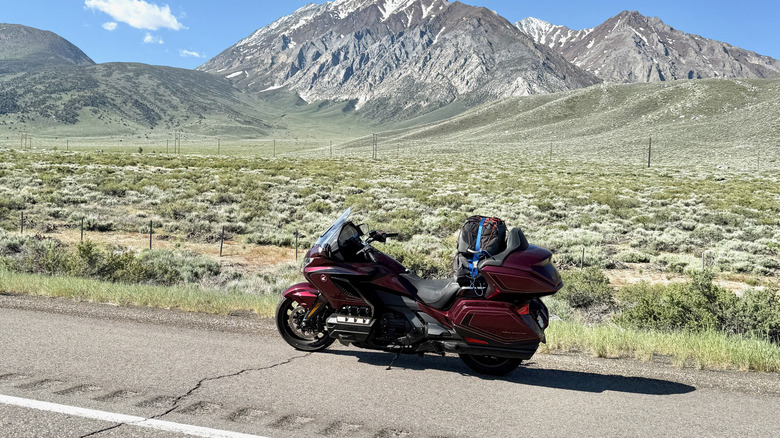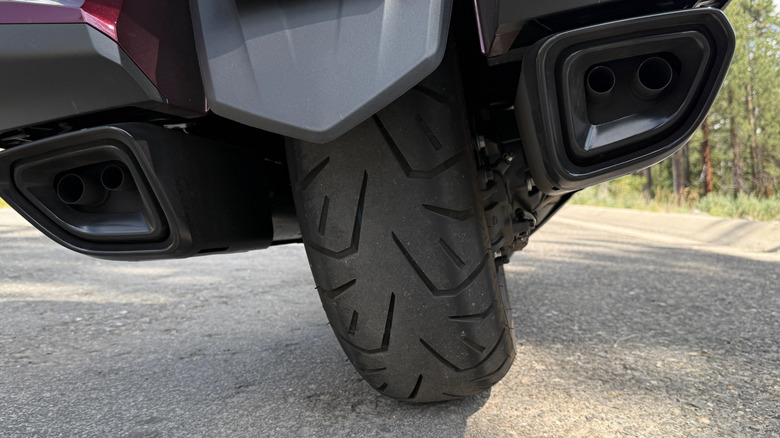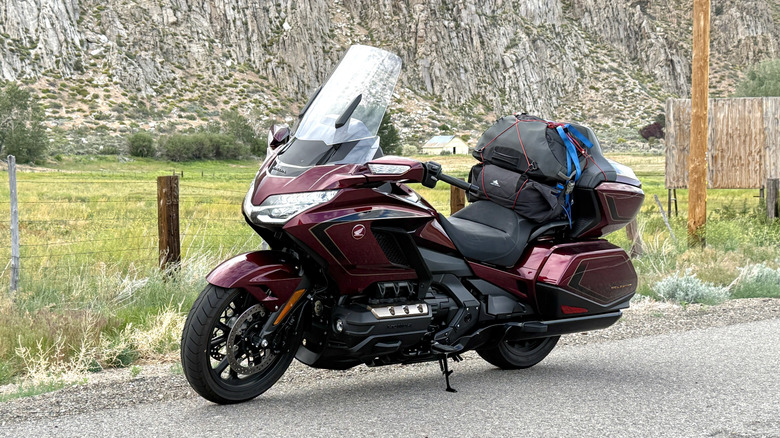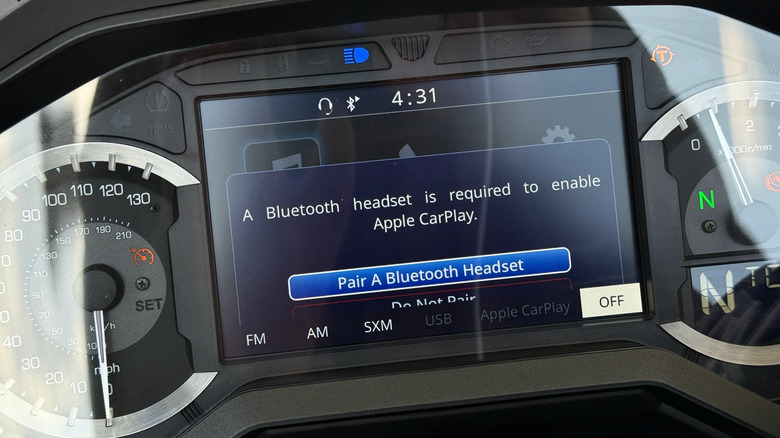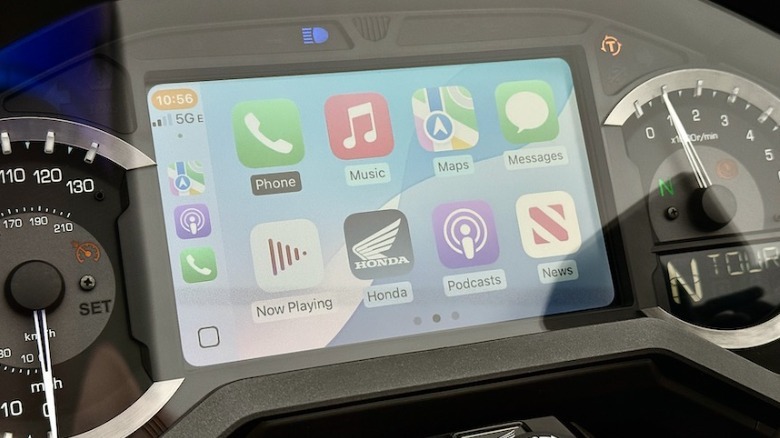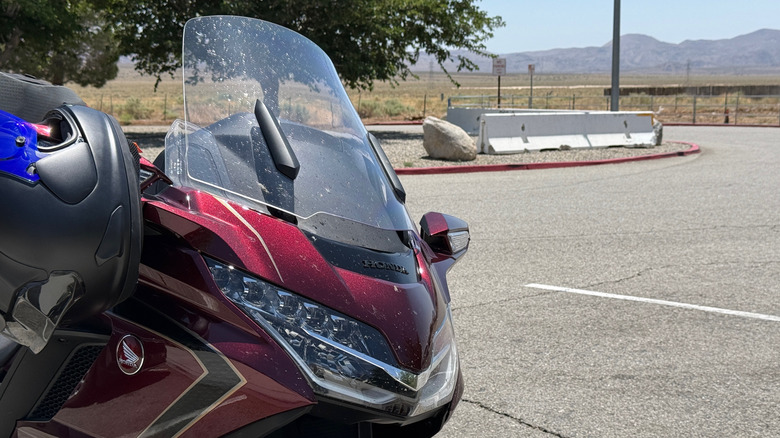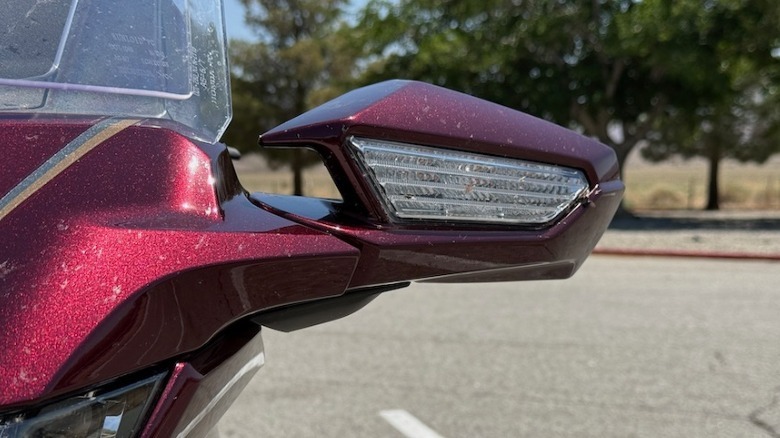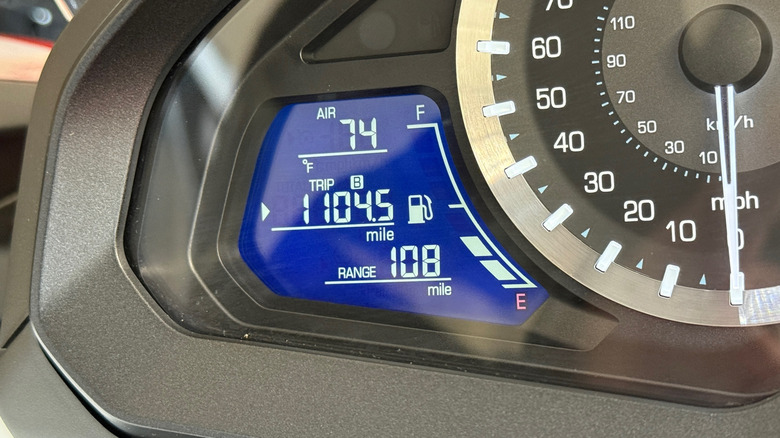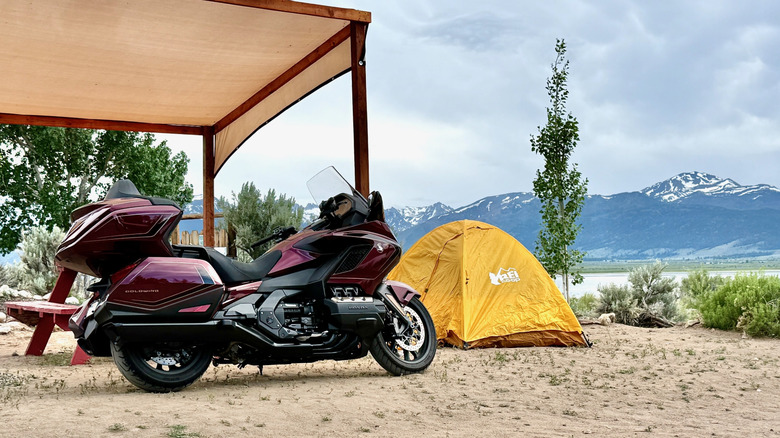2025 Honda Gold Wing Review: An 1,100-Mile Road Trip Spills Every Secret
I was steaming along through central California, doing my best to stay hydrated by stopping every hour or two, hanging out in the shade, and drinking as much liquid as I could stomach. The ambient temperature of 107 degrees taunted me from the dashboard of the 2025 Honda Gold Wing. I wondered where the next rest stop was, how much Gatorade I had consumed over the last 8 hours of riding, and for a second, if the Gold Wing could do a wheelie. Thankfully, calmer heads prevailed and I decided not to test my heat-induced theory.
The last thing on my mind though, was the possibility that I'd end up using the heated grips and the heated seats on the Gold Wing during the same 1,100-mile road trip. But, sometimes that's the sort of diverse weather California throws at you, and just a few days later, I was able to give those a go too. No matter what weather was on the horizon, the 50th Anniversary Gold Wing that I'd borrowed for a week, was up to the task.
What's new with the birthday boy?
Recently, Honda invited me out to ride the new CB 750 Hornet and CB 1000 Hornet SP and they even offered to pay for a flight. I said "Thanks, but no thanks" to the plane ticket and asked for the keys to a Gold Wing instead. The Gold Wing is currently celebrating its 50th Anniversary and the 2025 model got some updates worth noting: why not make the trip on two wheels?
For the 2025 Gold Wing, Apple CarPlay and Android Auto are now able to be connected wirelessly, but that does come with the elimination of Honda's native navigation system. There are also some new colors added to the lineup, a new start-up animation for the on-board screen, and special anniversary badging.
Honda was happy to hand over the keys to a new Gold Wing and I even got to pick the color; I went with Bordeaux Red. After a day to familiarize myself with the big touring bike, I left Los Angeles, headed for northern California to ride the Hornet twins with one of the most iconic bikes of all time as my transport. The ride from my front door to California's state capital is 380 miles but I threw in detours through winding mountain roads, past lakes and rivers, and I even stopped to camp on my way home.
Big power from a big engine
Powering my journey on the Gold Wing was the flat-six engine this flagship bike is known for. It's a horizontally-opposed 1,833cc six-cylinder with a hearty output. American Honda doesn't list the power numbers, but according to Honda's UK site, the Gold Wing makes 93 kW and 170 Nm ; that works out to 124.7 horsepower and 125 lb-ft of torque.
Power is delivered to the rear wheel via a six-speed manual transmission on base trims and a 7-speed dual-clutch automatic (DCT) on middle and upper trims. Honda says that the DCT is actually the more-popular transmission in their lineup, and with the kind of long-distance riding possible on the back of a Gold Wing, I can see why.
The 7-speed DCT worked flawlessly during my test. Over a week with the Gold Wing I never felt it hunting too long for gears. On full-acceleration rips, it upshifted quickly and without big forward jolts. If you really want the extra engagement of a manual, go for it, but the DCT doesn't dampen the experience at all.
Heavy but responsive
Depending on which trim level of the Gold Wing you go with, curb weight ranges between 802 and 856 lbs, but the flat-six engine is more than capable enough of hauling that weight around. Even with all the strapped-down gear and three full cases of my stuff, the Gold Wing somehow felt light on its feet with gobs of power available at the flick of a wrist.
The Gold Wing has four riding modes: Tour, Sport, Econ, and Rain. They change throttle sensitivity and, with the DCT automatic, ride modes alter shift points.
In both Tour and Sport modes, torque arrives almost immediately after twisting the throttle, while Econ and Rain dull it down a bit. I found myself using Tour the most, rolling onto the throttle for easy highway passes or smooth corner exits made the most sense that way. When I did decide to switch over to Sport mode, the throttle was certainly met with quicker responses from the Gold Wing's big flat six, but it wasn't twitchy or overly sensitive to inputs.
Built for the long haul
Whether I was going over broken highways, winding mountain passes, or crowded city streets with abundant pot holes, the Gold Wing was completely unbothered by changing road surfaces. Looking down while riding over rough streets, I could see the Gold Wing's double-wishbone suspension absorbing every imperfection. It was satisfying and a bit mystifying to watch the suspension at work. The electronically-adjustable preload was also a big plus, allowing me to configure things for a rider, passenger, and extra gear I brought along without needing a single tool to set things up properly.
On top of the smooth ride, the Gold Wing has an excellent seating position. At 5-foot-9 I found myself seated upright without any discomfort. With a seat height of 29.3 inches, stepping up and over was easy and I could flat-foot it at stop lights despite the wide seat. My arms were slightly bent with my hands resting atop the handlebars. With my butt against the back of the seat and with my arms comfortably draped forward, my legs bent at what seemed to be exactly 90 degrees. I would stretch from time to time, but only from the mild discomfort of maintaining the same body position for long periods of time. When it comes to long-distance comfort, the Gold Wing has few equals.
Somehow still sporty
Considering the Gold Wing's weight, its massive engine, and the wide rear tire, it's truly surprising just how nimble this big bike is. Up front, the Gold Wing's 18-inch wheel is wrapped in a 130/70 tire, but out back, the 16-inch wheel gets significantly wider rubber – a beastly 200mm wide Bridgestone. It's wider than tires on some compact cars and it does a proper job of putting down the Gold Wing's power, while remaining surprisingly nimble. Typically, with a tire anywhere near as wide as the Gold Wing's rear, there would be difficulty leaning into a corner, but the Honda had no such issues.
The underside of the Gold Wing is designed in such a way that I never scraped a peg, even in tight corners. From the center of the bike, the fairings sweep upward at a steep angle, keeping all the necessary parts away from the ground. There's also 5.1 inches of ground clearance to clear big speed bumps or stop you from bottoming out in a big pothole. Up front, the Gold Wing gets 320mm front brakes rotors with six piston calipers and in back a 316mm rotor with a big single caliper. They brought the bike to a stop with confidence, without feeling grabby, no matter how much pressure I applied before hard corners. It turns out that the Gold Wing is just as fun to ride as it is comfortable.
Bringing too much stuff
I'm a chronic over-packer and this was a particularly demanding trip, even for me. On top of the riding gear required (all the gear, all the time), I needed to bring my laptop and charging cables. I'd also be on the road for a total of seven days, so I needed to bring a lot of clothes along, too. And, I needed a sleeping pad, sleeping bag, pillow, and tent for the camping portion. Finally, like you should on any long-distance ride, I brought along a flat-repair kit and some other emergency items to avoid getting stranded.
Bringing all this gear meant that on top of filling both 30-liter side cases and the 61-liter top case to their limits, I had to strap down a few bags to the back seat. There was plenty of space for all this gear, and I was well below the weight limit, but tie-downs were a problem. Aside from the rear-passenger handles, there aren't really any tie-down points on the top case, so I had to do a bit of improvising and rope through the top case for duffel-bag security. Giving them a hearty "that's not going anywhere" slap every time I tied them down and disembarked, my bags stayed secure the entire trip.
Connectivity woes
Connecting my phone via the USB for some on-the-go charging was a nice touch on the trip. The phone cubby where I connected and stored the phone, however, got exceedingly hot. On my hottest riding days, my phone went into safe mode and I had to move it to my jacket pocket for some ventilation. Meanwhile, getting the Gold Wing and Apple CarPlay to play nicely together was a tall task. Even after a few attempts to connect via both a wired and wireless connection, I couldn't get Apple CarPlay up on the Gold Wing's screen.
The Honda folks helped me with some troubleshooting, cluing me into the fact that I needed to be connected to my headset as well as the bike's systems for everything to work properly, which seemed strange to me given the bike's four speakers and my desire to play music, via CarPlay, through said speakers. No dice: that's a Bluetooth only dance.
Even after connecting successfully though, things weren't perfect. To get Apple CarPlay on the screen, I had to reconnect my headset and the motorcycle several times over a few days. Then, if I turned the bike off for a fuel stop, I had to reconnect by power-cycling my headset again. These were relatively minor issues, but one's I'd certainly be annoyed with if the Gold Wing were my everyday bike.
Protected from the wind (and bugs)
On the final leg of my trip, instead of 107 degrees, it was 57 degrees. It's not exactly freezing, and I was thankful for the decline in temperature, but that can feel relatively frigid when you're wearing ventilated summer gear. Thankfully the Gold Wing's massive power-adjustable windscreen kept most of the ambient air off my front side while the heated seat kept my back side warm. The heated grips worked well too, warming my hands inside the breathable summer gloves I opted to bring on the warm-weather trip.
The windscreen protected me so well, in fact, I was able to listen to podcasts and music inside my helmet, even at highway speed. The volume levels inside my helmet have never been lower. And, without all that wind blasting over my ears I could hear the distinct flat-six rumble from the exhaust. Rolling on to the throttle elicited a low, grumbly tone from the Gold Wing, adding to the ever-growing list of positive attributes about this bike.
The price to buy and price to ride
With all its comfort, tech, and power, the Gold Wing is a joy, but it isn't cheap. A standard 2025 Gold Wing with the six-speed manual and manually-adjustable suspension preload has an MSRP of $25,975 (including $775 destination fee). The DCT adds $1,000 to that price. The Gold Wing Tour — which includes the top case, electronic preload adjustment, and the four-speaker stereo — goes up to $29,475. At the top of the range, the Gold Wing Tour with the DCT, the 50th Anniversary livery, and the available airbag checks in at $34,725.
Over 1,100 miles of riding I averaged 41.4 mpg on the Gold Wing. The worst fill-up I saw was during my initial ride from Los Angeles to Northern California, where I hit some heavy traffic and averaged 37.5 mpg. Going back south, I rode over a mountain pass, then stuck to slower-speed highways and kept the Sierra Nevada mountains on my right. There, I averaged 47.5 mpg.
If I were to take the bags off the back, load up a bit less gear, and stay light on the throttle, I'm fairly certain the 850-pound Gold Wing could average over 50 mpg: impressive for such a big bike. It's also worth noting that the Gold Wing doesn't require premium fuel; fill it with 87 octane and it'll run just fine. A small drawback, though, is the 5.5-gallon tank which doesn't offer quite as much range as some iron-butt riders might want.
2025 Honda Gold Wing Verdict
There are very few bikes that are as comprehensively good as the Gold Wing. It has an excellent ride, a smooth and powerful engine, and modern features that will help keep you connected and comfortable for days on end. It's certainly expensive, and a few minor issues popped up on my trip like consistent smartphone connectivity, but otherwise, the Gold Wing was unflappable.
Every riding scenario I experienced on the Gold Wing was a comfortable one; even in the heat, it stood out just how comfortable the suspension was. More than just a plush long-distance cruiser, though, the Gold Wing is fun to ride quickly too. It was entertaining, engaging, and it never felt bogged down by its considerable size, no matter how twisty the roads got. Rivals like the BMW K 1600 GT, Harley-Davidson Road Glide, and Indian Pursuit are all worth a closer look, but the Gold Wing should be right at the top of your shortlist if you're shopping for big cruisers.
